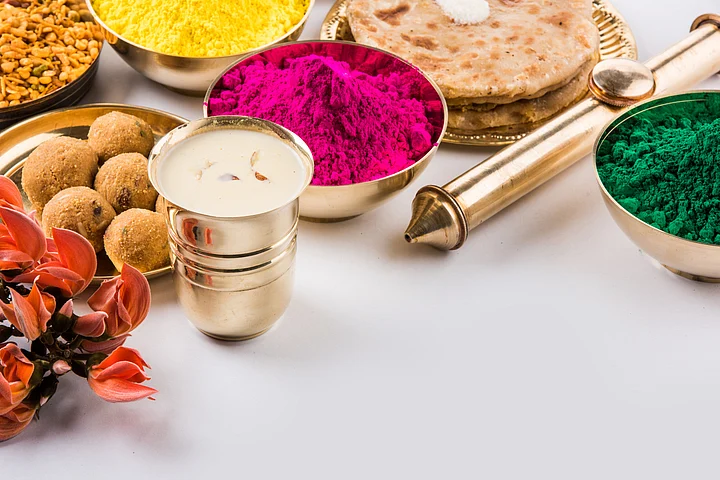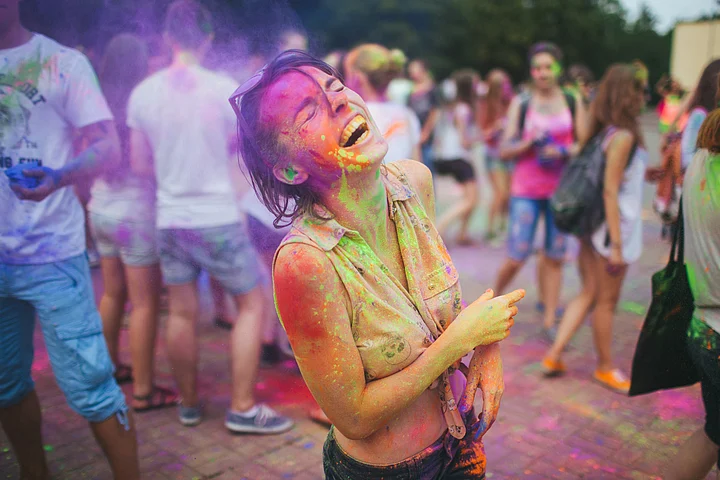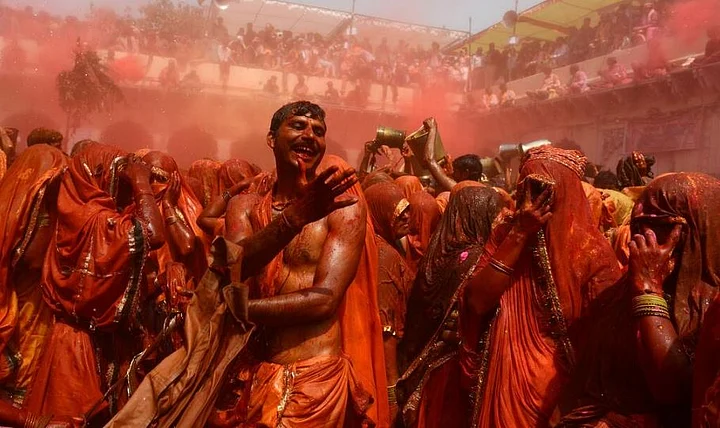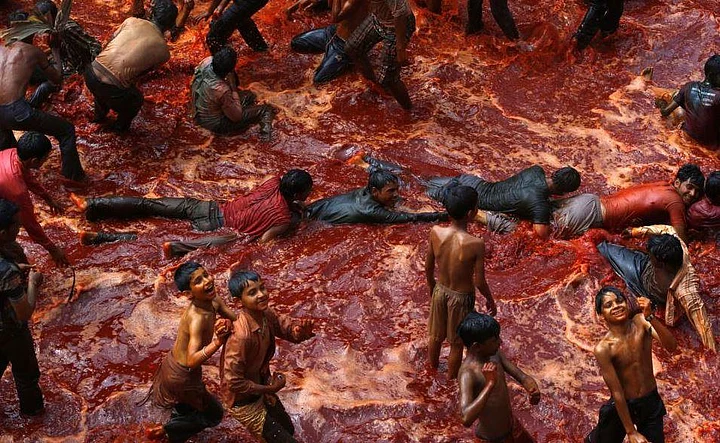Braj ki Holi is laden with innumerable colours, mouth-watering food, age-old traditions and unrestrained fun. Vrindavan, the birthland of Lord Krishna, and neighbouring areas draw a number of tourists every year to be a part of the festivities.
What is interesting is that in Braj, Holi is not a one-day festival, but is spread over a week or even more, starting from the first day after the Phalgun Amavasi. There is a lot to do, lots to eat and lots to see. Here’s a glimpse of what awaits you at the Braj bhoomi:
1. Lath Maar Holi in Barsana and Nandagaon
“Are Ja Re Hat Natkhat,
Naa Chhure Meraa Ghunghat
Palat Ke Dungi Aaj Tujhe Galee Re
Mujhe Samajho Naa Tum Bholee Bhali Re”
These lyrics capture the essence of the popular lath maar holi celebrated in Barsana and Nandagaon in Uttar Pradesh. As goes the legend, Lord Krishna along with his friends visited Barsana to play Holi with Radha and her friends. Till this day, men from Nandagaon dress as Krishna and visit Barsana to play Holi with the women there. The women, dressed as Radha, gleefully beat them with sticks, which explains the name “lath maar” Holi.
The festivities around Radha-Rani temple are just too grand to be missed.
2. Phoolon Ki Holi in Gulal Kund
Gulal Kund, near Govardhan Mountain, witnesses Raas-leela at the time of Holi. The local people who double up as performers enact scenes of Holi for the visitors. This is followed by the famous phoolon ki Holi, which is now also celebrated in other parts of the country.
3. Widows’ Holi Vrindavan
Thousands of widows are forced into a reclusive life till this day. While earlier, they were prohibited from playing with colours, the widows recently have broken away from the tradition. Moving away from years of social stigma attached to them, the women (still clad in white sarees) smear each other’s faces with colours to mark this vibrant festival.
4. Vrindavan’s Banke-Bihari Temple
As the tradition of the temple goes, Lord Krishna dressed in white is brought closer to the devotees (an impersonation) and he showers them with gulaal and colours. The priests follow suit and throw colours and flowers on everyone in the compound. Loud chants of bhajans fill the air and devotees can be seen going into a spiritual trance - such is the impact of the festivities.
5. Mathura Holi Procession
A colourful procession takes place through the streets of Mathura after the Holi festivities in Vrindavan get over. Starting from Vishram Ghat, the procession stops at Holi Gate. The various colours of the festival can be best enjoyed en-route, between the two landmarks. Vehicles decorated with flowers, with kids impersonating Radha-Krishna are the key attractions of the procession.
The end of the procession makes way for the Holika Dehan at the Holi Gate.
6. Mathura’s Dwarkadheesh Temple
The Dwarkadheesh temple in Mathura is home to the biggest celebration on Holi. The gates of the temple open at 10 am and a huge crowd can be seen playing Holi and dancing to the dhol.
Women usually play Holi inside the temple and a number of tourists can be seen joining the festivities. What’s best? You can even head out to Vishram Ghat to see priests making bhaang!
7. Huranga at Dauji Temple
Huranga is an aggressive form of Holi. The tradition goes back almost 500 years -started by the family that established the Dauji temple. The temple courtyard comes alive with men getting beaten up by the women. Only the traditional family, which has over 3,000 members now, participates in the event (while others are allowed to witness).
Women don’t just use colours, but also beat the men up and strip them of their upper clothing too. No one takes offence as it is all done in festive spirit!
After the ceremony, anyone can join in and everyone together plays more Holi.
(At The Quint, we question everything. Play an active role in shaping our journalism by becoming a member today.)


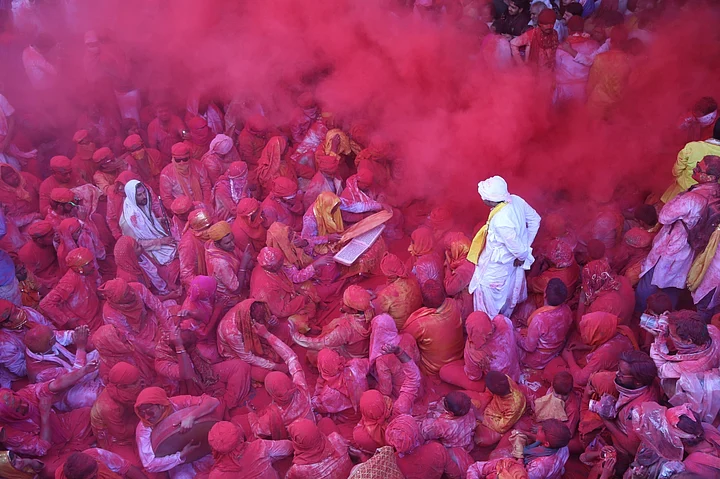
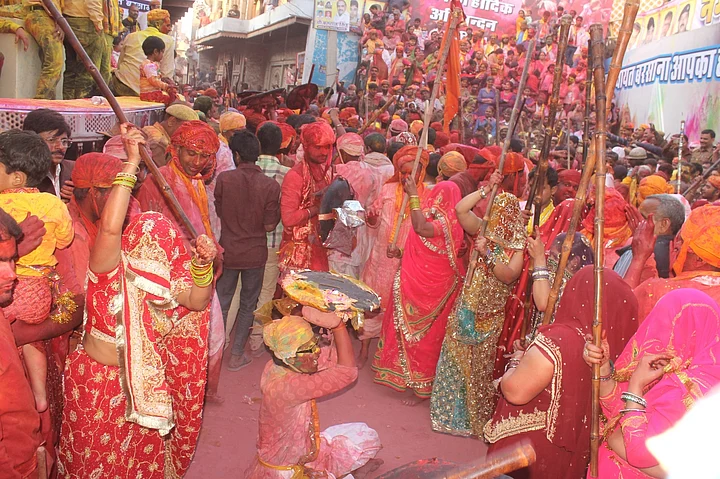
.jpg?auto=format%2Ccompress&fmt=webp&width=720)

.jpg?auto=format%2Ccompress&fmt=webp&width=720)
.jpg?auto=format%2Ccompress&fmt=webp&width=720)
.jpg?auto=format%2Ccompress&fmt=webp&width=720)

